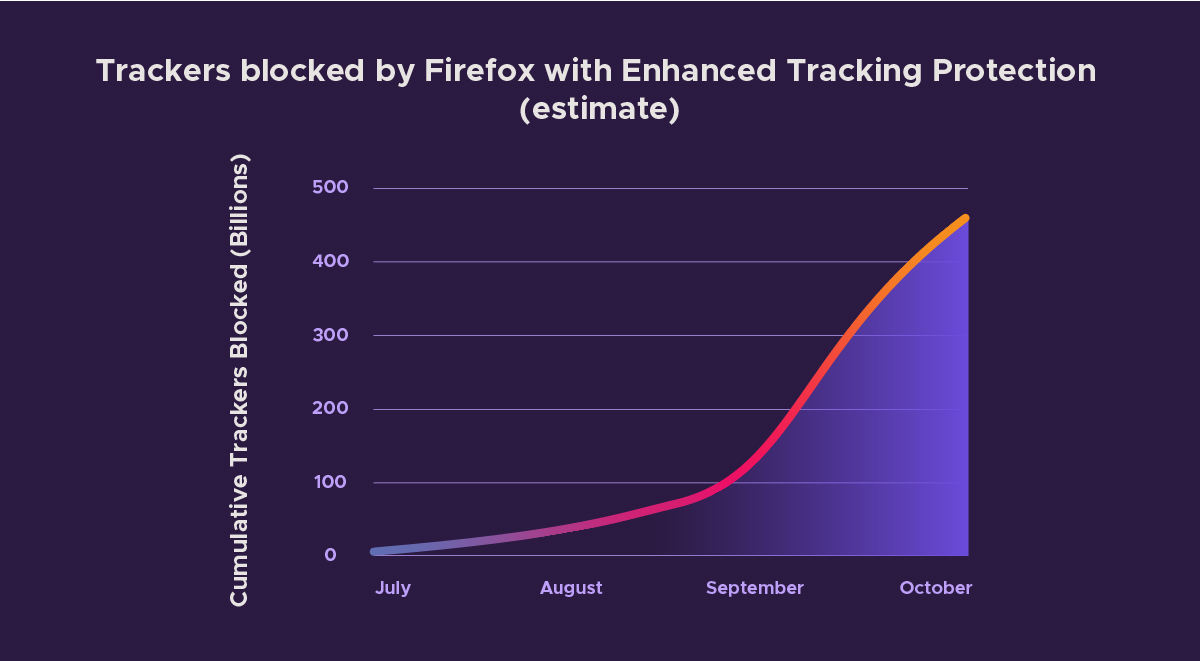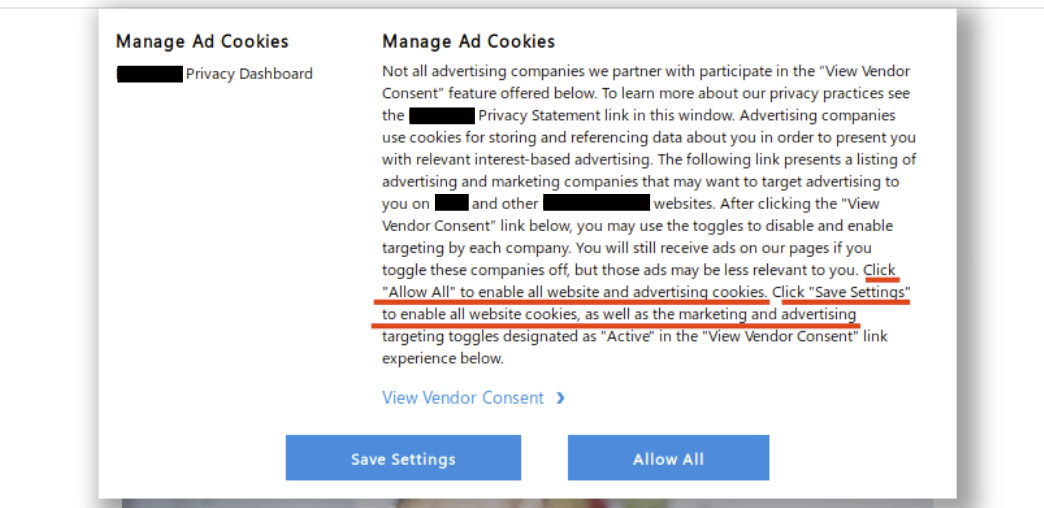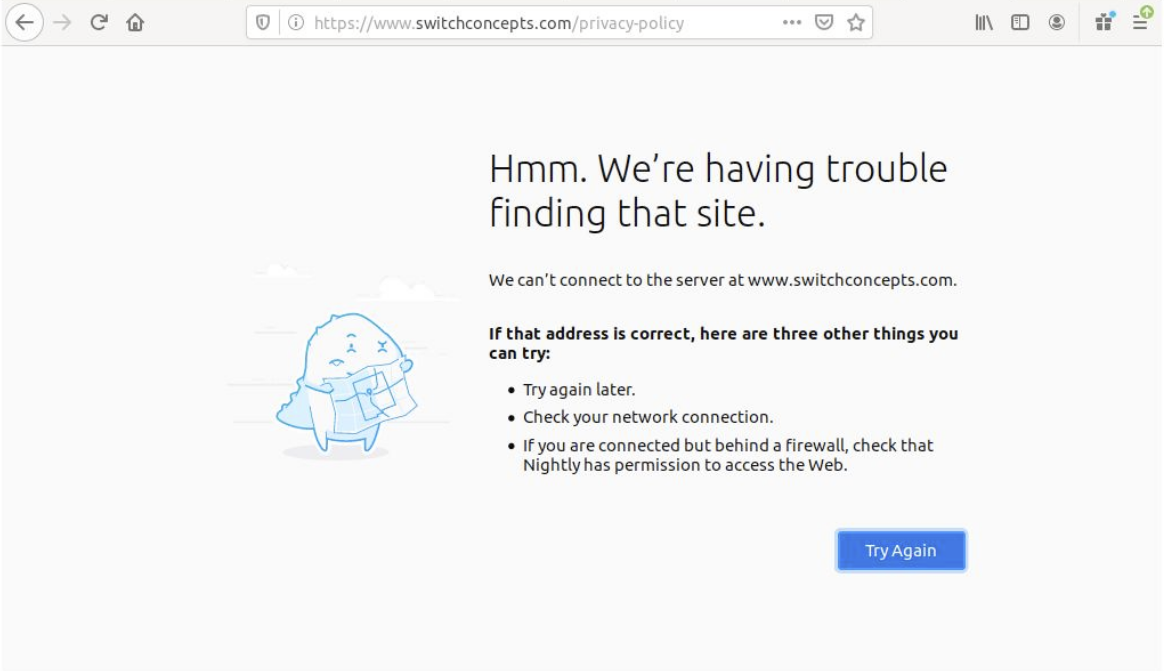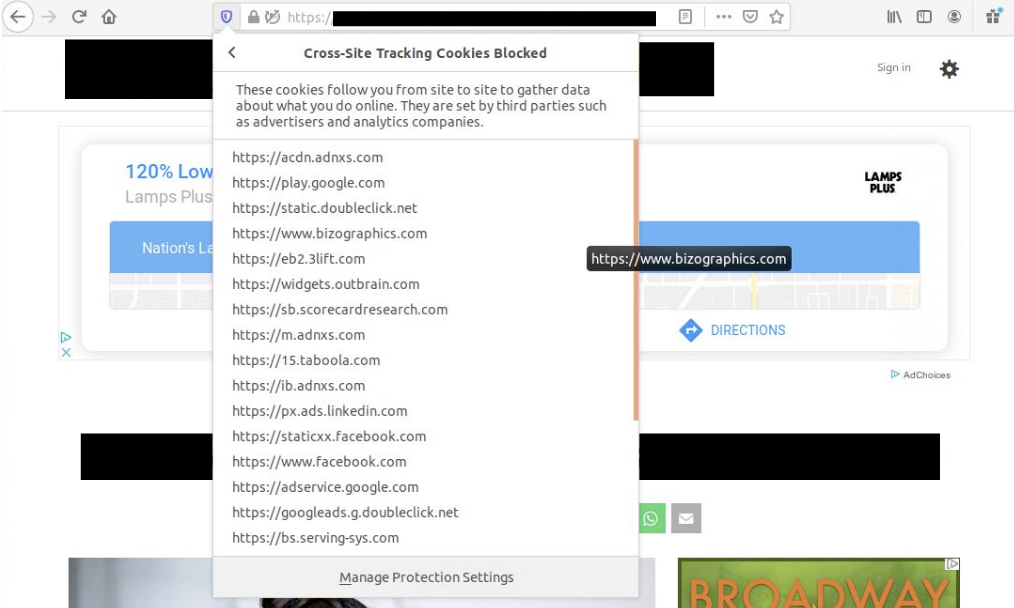Since July 2019, Firefox’s Enhanced Tracking Protection has blocked over 450 Billion third-party tracking requests from exploiting user data for profit. This shocking number reveals the sheer scale of online tracking and it highlights why the current advertising industry push on transparency, choice and “consent” as a solution to online privacy simply won’t work. The solutions put forth by other tech companies and the ad industry provide the illusion of choice. Let’s step through the reasons why that is and why we ultimately felt it necessary to enable Enhanced Tracking Protection by default.
A few months ago, we began to enable Enhanced Tracking Protection, which protects Firefox users from cookie-based tracking by default. We did this for a few reasons:
1. People do not expect their data to be sent to, and collected by, third-party companies as they browse the web. For example, 72% of people do not expect that Facebook uses “Like” buttons to collect data about a person’s online activity on websites outside of Facebook (when the buttons are not actually clicked). Many in the ad industry will point to conversion rates for behaviorally targeted ads as evidence for consumers being okay with the privacy tradeoff, but people don’t know they are actually making such a tradeoff. And even if they were aware, we shouldn’t expect them to have the information necessary to evaluate the tradeoff. When people are asked explicitly about it, they are generally opposed. 68% of people believe that using online tracking to tailor advertisements is unethical.
2. The scale of the problem is immense. We currently see about 175 tracking domains being blocked per Firefox client per day. This has very quickly resulted in over 450B trackers being blocked in total since July. You can see the numbers accelerate in the beginning of September after we enabled Enhanced Tracking Protection for all users.

It should be clear from these numbers that users would be quickly overwhelmed if they were required to make individual choices about data sharing to this many companies.
3. The industry uses dark patterns to push people to “consent” via cookie/consent banners.
We’ve all had to click through consent banners every time we visit a new site. Let’s walk through the dark patterns in one large tech company’s consent management flow as an example, keeping in mind that this experience is not unique — you can find plenty of other examples just like this one. This particular consent management flow shows how these interfaces are often designed counterintuitively so that users likely don’t think they are agreeing to be tracked. We’ve redacted the company name in the example to focus on the content of the experience.
To start off, we’re presented with a fairly standard consent prompt, which is meant to allow the site visitor to make an informed choice about how their data can be collected and used. However note that clicking anywhere on the page provides “consent”. It only gets worse from here…

If the user manages to click “Manage Ad Cookies” before clicking elsewhere on the page, they are given the options to “Save Settings” or “Allow All”. According to the highlighted text, clicking either of these buttons at this point provides consent to all partners to collect user data. Users are not given the option to “Disable All”.

Instead, if a user wants to manage consent they have to click the link labeled view vendor consent. Wording matters here! If a person is skimming through that dialog they’ll assume that link is informational. This consent flow is constructed to make the cognitive load required to protect oneself as high as possible, while providing ample opportunity to “take the easy way out” and allow all tracking.
Finally, users who make it to the consent management section of the flow are presented with 415 individual sliders. The website provides a global toggle, but let’s assume a user actually wants to make informed choices about each partner. After all, that is the point, right?

Eight of the 415 privacy policies linked from the consent management page are inaccessible. They throw certificate errors, fail to resolve, or time out.

The 407 privacy policies that load correctly total over 1.3 million words. That will take the average adult over 86 hours — two solid work weeks — just to read. That doesn’t even consider the time needed to reflect on that information and make an informed choice.
Proposals for “transparency and consent” as a solution to rampant web tracking should be seen for what they really are: proposals to continue business as usual.
Thankfully Firefox blocks almost all of the third-party cookies loaded on the page by default, despite the deceptive methods used to get the visitor to “consent”.

While it is easy to focus on this particular example, this experience is far from unique. The sheer volume of tracker blocking that we see with Firefox’s Enhanced Tracking Protection (around 175 blocks per client per day) confirms that the average individual would never be able to make informed choices about whether or not individual companies can collect their data. This also highlights how tech companies need to do more if they are really serious about privacy, rather than push the burden onto their customers.
Firefox already blocks tracking by default. Today, a new version of Firefox will be released which will make it clear when tracking attempts are happening without your knowledge and it will highlight how Firefox is keeping you safe.
We invite you to try and download the Firefox browser here.



